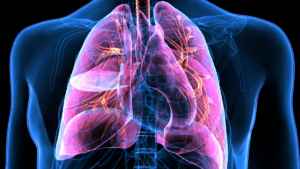
Mission, Manufacturing, and Impact: New CRB Horizons Report Points to Progress in Production of New Therapies
Corporate Executives are Driving Change and Focusing Their Teams on Patients
By Sam Hopkins | October 4, 2023
| BioBuzz has been connecting the life science workforce since 2009. We’ve built an expansive community in the Mid-Atlantic with a national readership that spans from Massachusettes to Florida, and New York to California. For our next chapter, we’re building a proprietary talent logistics model to help employers source and hire life science talent. Learn more. |
CRB Group, which provides engineering, architecture, construction, and consulting services for the life science industry and others, has released its new Horizons report, highlighting progress and opportunities in several areas of life science technology development.
Observations in the report center around process improvements that will bring new therapies to market in a cost-effective and even environmentally conscious way. Reading the report provides deep insight into specific quality and materials management methods and real puzzles that leaders and managers are solving. It also sheds light on possibilities for entrepreneurs and members of the workforce who want to position themselves to unlock potential and drive the field forward. Below are some of our key takeaways and connections to the BioHealth capital region.
For the report, CRB interviewed a wide range of stakeholders in the life sciences, with respondents coming primarily from the cellular therapy field. CRB operates in the fields of cell and gene therapy, monoclonal antibodies and therapeutic proteins, RNA therapies, and vaccines. Across all of the respondents, the emphasis on developing patient-centered approaches was clear.
The Drumbeat of Patient-Centered Thinking
One interesting perspective came from Max Moore, Vice President of Manufacturing and Operations at Ionis Pharmaceuticals, who said that it’s easier to stick with hard problems when you can see the potential impact on patients–in the case of Ionis, those are patients with profound paralysis. That “drumbeat of patient-centered thinking” at all levels of the company leads to stronger engagement beyond what salary and benefits can drive. With a workforce that has grown 70% since 2018, human connection and consistent reinforcement of the mission as a way of being are driving culture and process. On that note, Ionis and other R&D-focused companies are transitioning into their next phase as fully integrated manufacturing companies. That takes a lot of planning and building: that’s physical, personnel, and process-level construction.
When it comes to cost, most in the commercial life sciences field do come from some research institution as part of their education and carry a spirit of exploration, and a sense that there is funding available to lay the groundwork for future therapies. When development moves into regulatory processes, and then onto industrial scale, the time and money spent and the development of processes matter significantly for minimizing risk and improving the pathway to patients. As we learned in the recent BioBuzz In Conversation with Dr. Patrick Hanley, Chief & Director of the Cellular Therapy Program at Children’s National Hospital, innovation in good manufacturing practices (GMP) is crucial to expanding access and lowering cost. Children’s National recently hosted a cellular biomanufacturing workshop to explore the topic and Mid-Atlantic potential for advancing the field at its Washington, D.C. Research and Innovation Campus.
Ramping Up and Cleaning Up
The reality of manufacturing cures may be closer to the conventional view of industrial production than many people think. One topic that stood out in the Horizons report is the environmental implications of some new frontiers of cancer therapeutics, such as antibody-drug conjugates. As we learned in our recent discussion with Dr. Sylvie Laquerre, Vice President, Solid Tumor Targeted Therapy Disease Area Stronghold Lead, Oncology Therapeutic Area, Janssen Pharmaceutical Companies of Johnson & Johnson ADCs are a complex technology. “Many refer to them as three drugs in one: 1) a cancer selective monoclonal antibody, 2) a toxic payload, and 3) a linker attaching the payload to the antibody.”
As the CRB report notes, making ADCs relies on large volumes of solvents, creating hazardous waste, with a high risk of cross-contamination in the process. Manufacturers are working to address those unique manufacturing challenges through facility design, equipment innovations, and cleaning protocols.
Fortunately, significant numbers of respondents surveyed for the Horizons report said their sites are using new purification methods in commercial-scale manufacturing, helping to reduce liquid waste, use less raw material, and reduce process time. In the end, CRB expects that improved manufacturing will bring more potent medicines to market.
Along with findings about manufacturing process improvement, CRB also learned that 76% of companies in its data set are implementing AI strategies in the next 2 years, with 97% planning to do so by 2028, and that top c-suite executives are the ones driving the use of data analytics to improve processes, cost, and patient access. That’s good news for everyone.
The full CRB Horizons Life Sciences 2023 report is available here: https://go.crbgroup.com/2023-horizons-life-sciences-report
- About the Author
- Latest Posts
Sam Hopkins has spent the past decade in the Baltimore area life-science and healthcare ecosystem, including roles at Johns Hopkins, the University of Maryland, the U.S. Army, and early-stage companies. He spent the previous decade as a journalist, which saw him cover everything from clean energy conferences in Morocco, to Soviet-era Estonian rock’n’roll, to trailblazing CEOs in Timonium. Sam is an avid athlete and coach, and he lives with his wife and two sons in Baltimore’s Oakenshawe neighborhood. You can often find him around town spinning records as DJ Balagan, or performing in musical groups Sink and South of Boundary.







